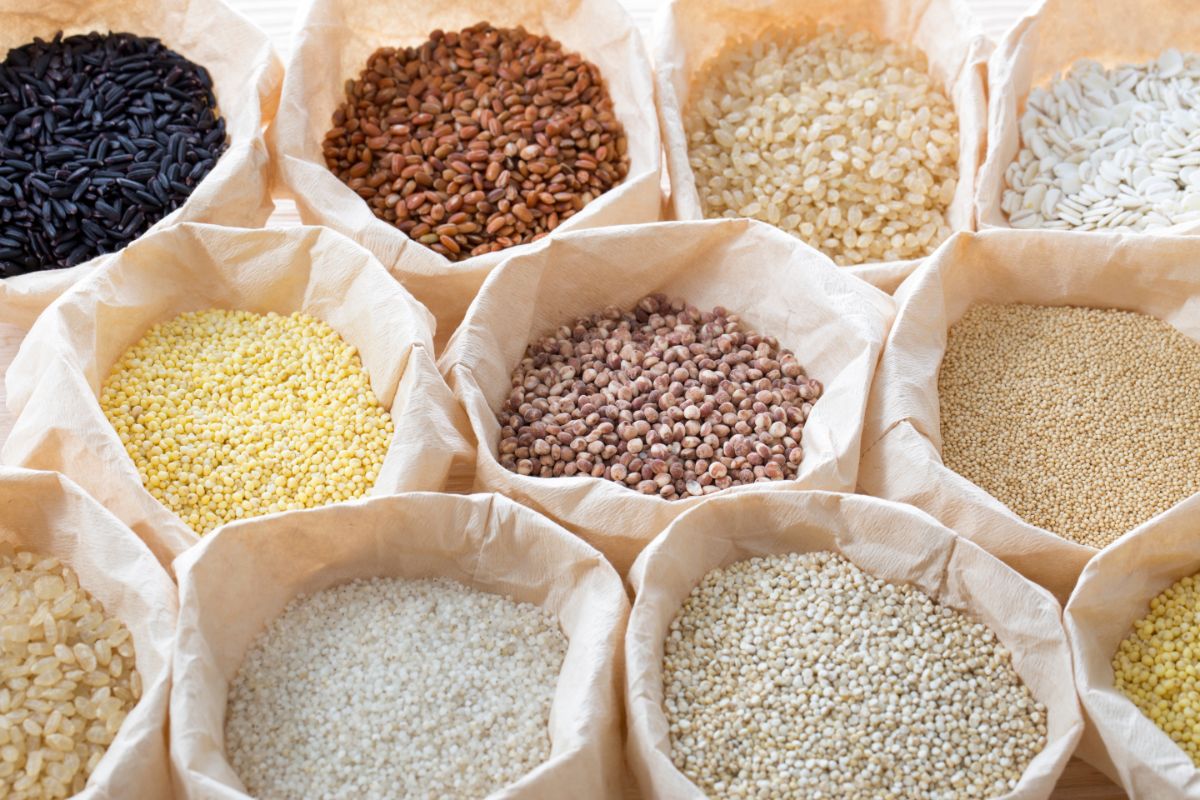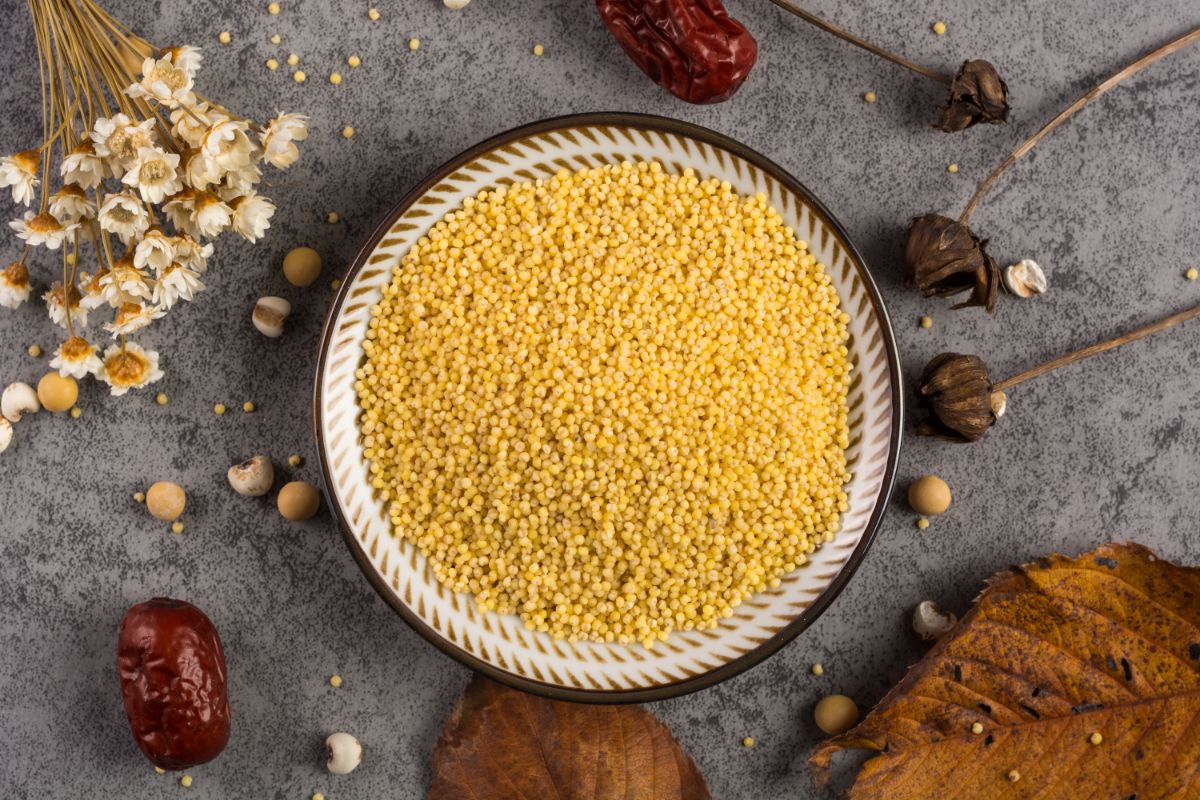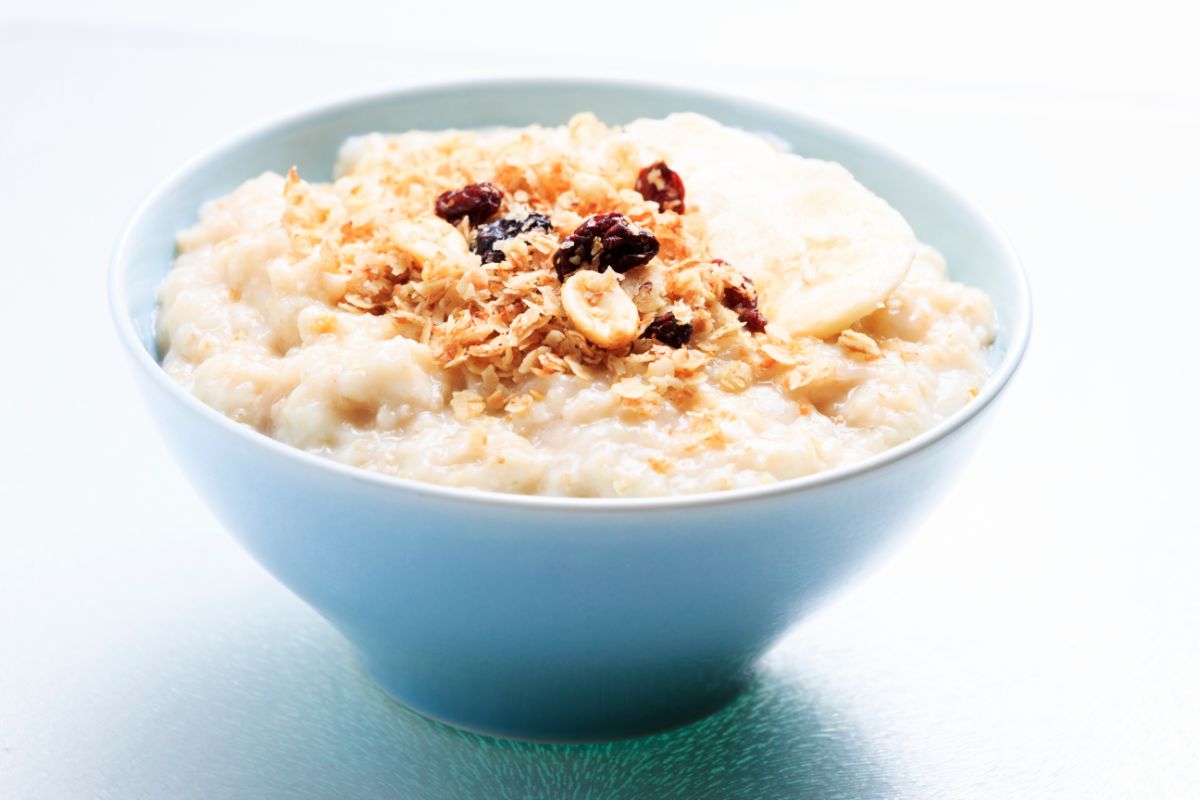Millet is an ancient seed that has been consumed for over 7,000 years by humans. In modern times it is commonly grown in Africa and China. You heard that right, millet isn’t a grain at all, it’s a seed!
Like quinoa and amaranth, millet is known as a pseudocereal which means that it’s a seed that is treated like a grain. Specifically, millet is a part of the Poaceae family.

Known for its mild corn flavor, millet is slightly sweeter when compared to other grains (Check out Is Corn A Grain here). It is also 100% gluten free, and has a bunch of other nutrients packed into it.
Benefits
Millet is rich in fiber and protein, as well as:
- Iron
- Calcium
- B vitamins
- Manganese
- Antioxidants
But, like everything, it should be eaten in moderation and as part of a balanced diet.
There is something that should be considered when eating millet, and that is the fact it contains goitrogens.
Goitrogens are compounds that interfere with thyroid functions, so if you’re prone to thyroid problems then maybe be careful.
This doesn’t mean you have to avoid millet entirely, just maybe don’t eat it for every meal.
Types
- Grain – This is the standard type of millet you will find. It is often called pearl millet.
- Flour – Millet flour is a good gluten free alternative and works well as part of a blend. It is commonly used to make flat bread in western India.
Should You Soak Millet Before Cooking

It is a well-argued debate on whether or not you should soak millet. The honest answer? It’s completely up to you.
If you choose to soak your millet then you get a soft even texture that requires slightly less water to cook. Soaking your millet apparently helps with digestion, but it definitely makes your millet creamier.
If you don’t soak it, then some of the grains will be slightly crunchier which adds texture to the dish. Either way, it is still tasty and good for you.
How To Cook
Boiling
Before you do anything, check to see if your millet is clean. Most store bought millet will be, but if you see any black spots then run it under warm water for a minute or so to clean it.
It is recommended that you toast your millet in order to bring out the nutty flavor. You do this by tossing them in a non-stick pan over medium heat until they turn a golden brown.
Now that you have your toasted millet you can boil them. If you have cooked any grains before then you know the absorption method, which is what you’ll use to cook millet.
All you need is a 2:1 ratio of water (or broth if you want extra flavor) to millet. You first bring it to a boil in a large saucepan, once it gets there you turn the heat down to low and cover.
It will take about 15-20 minutes for the millet in the covered pot to absorb all the water. Try not to stir it too much, only do so if you’re worried about it sticking to the bottom of the pan.
Now you can serve this immediately, but we like to leave it off the heat for about 5-10 minutes more before fluffing it with a fork. This gives it a softer texture.
Extras
If you want to you can add oil to the water to stop the millet from sticking together, or soy sauce as a seasoning. Instead of soy sauce you could just add salt for a gluten-free option.
Serving Suggestions
- With a side of roasted vegetables.
- As a rice replacement in curries.
- Stuffed in foods like bell peppers and mushrooms.
- As part of a grain salad.
- To thicken soups.
Porridge

A common way to prepare millet is as a porridge. To do this you just follow the normal boiling method but at a 3:1 ratio of water to millet.
If you want you could swap out half the water for milk or coconut milk for an extra creamy porridge. Unlike the regular cooking method, when you make porridge you need to stir it frequently.
You could serve this with some fruits, honey and nuts for the ultimate breakfast treat.
If you grind your millet a little before cooking your porridge then you get a smoother end result. You can leave this out to set and it will form a polenta-like potato substitute. You can use this to make croquettes or fritters.
Popped
You are able to cook millet in a frying pan like popcorn to get a deliciously crunchy snack. You can either eat this as it is, or you can add it to protein bars or trail mix.
Millet’s neutral taste means it goes well in sweet snacks just as well as savory ones.
Raw
You may not think it, but by adding raw millet to batters you can create a wonderful texture. You can add it to cookies and muffins to give them a nutritional boost.
Or you can add it to bread, in fact most multi seeded bread you buy in store already has millet in it.
How To Store
Millet and millet flour is best stored in an airtight container in a cool place. Ideally you want to keep it in your freezer where it can last about 6 months.
When millet goes bad it produces an odd aroma and you may see mold. When this happens you need to throw it away and get a fresh batch.
Conclusion
As far as gluten-free grains are concerned, you can’t get much more versatile than millet.
With a complex history and playing a key part in many cultural foods, this seed has gained the much deserved title of one of the most popular grains in the world.








